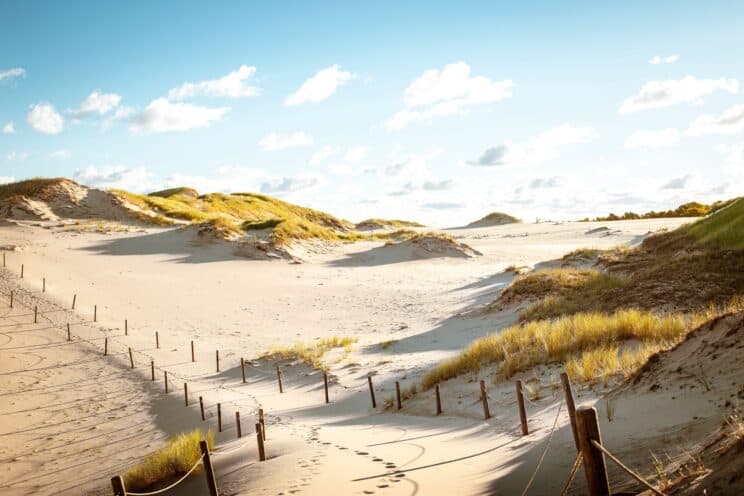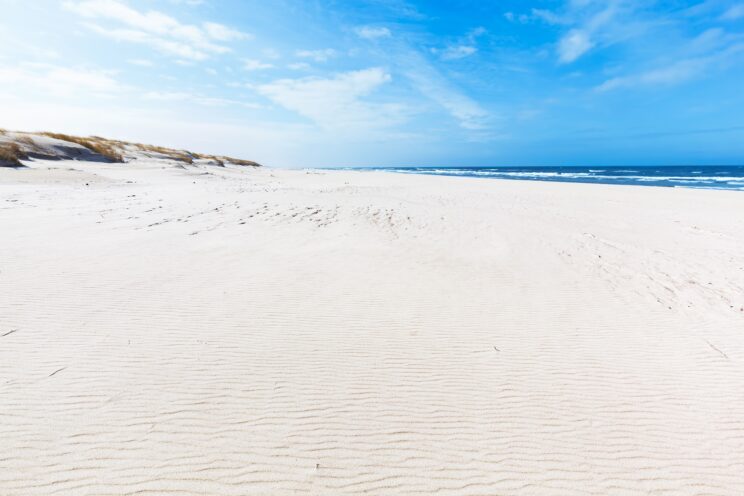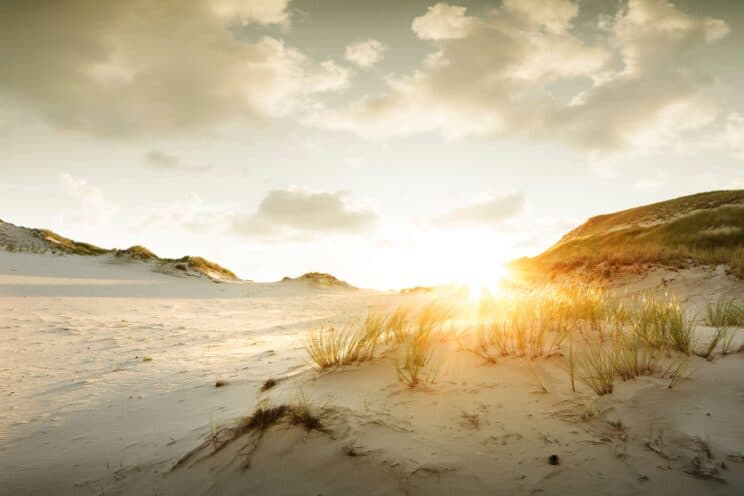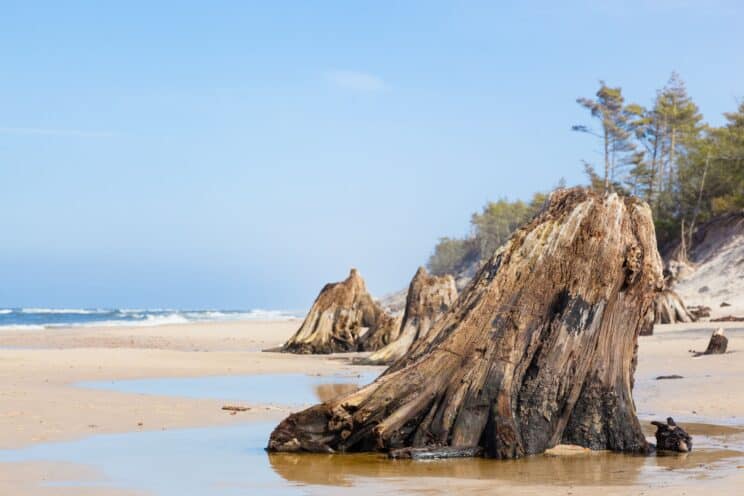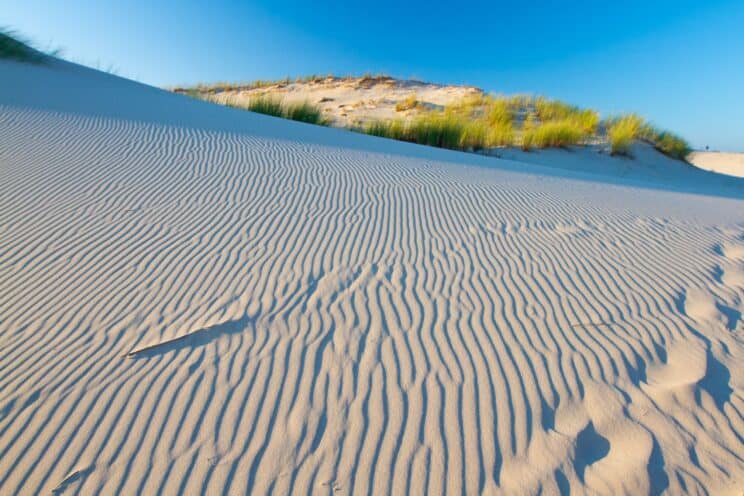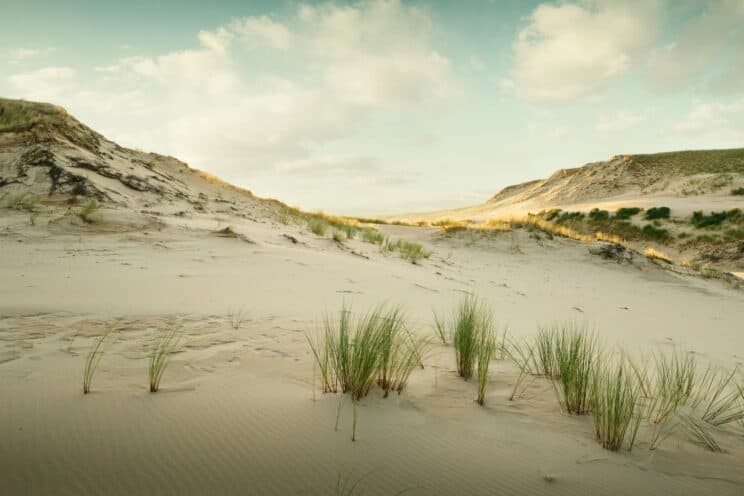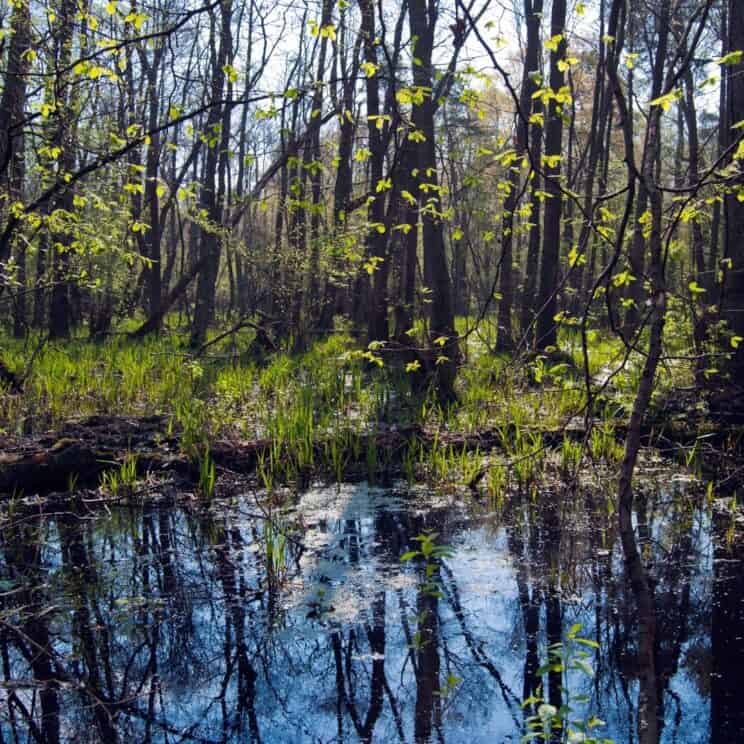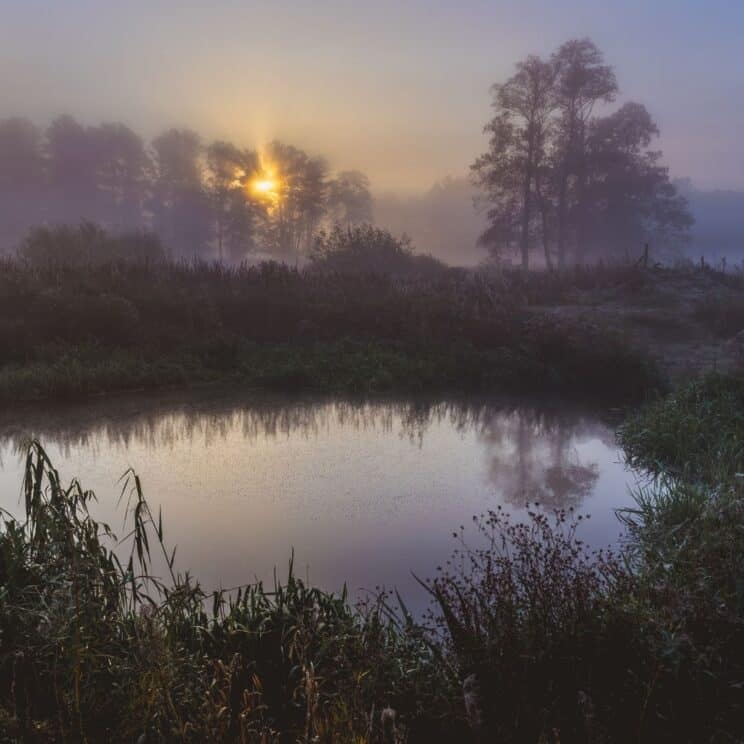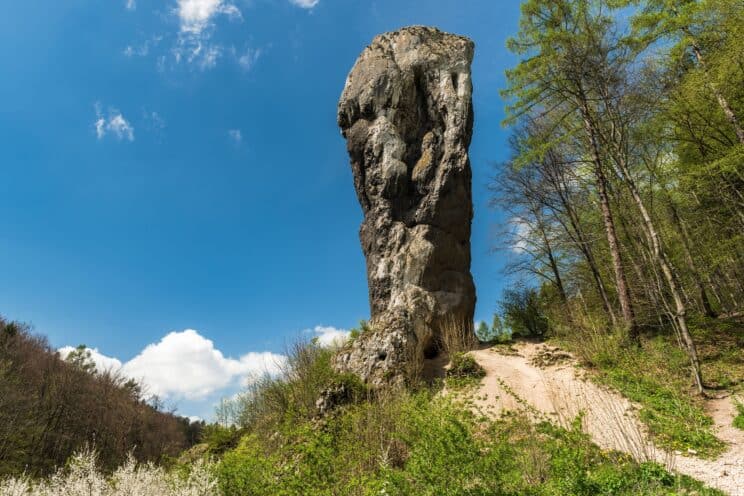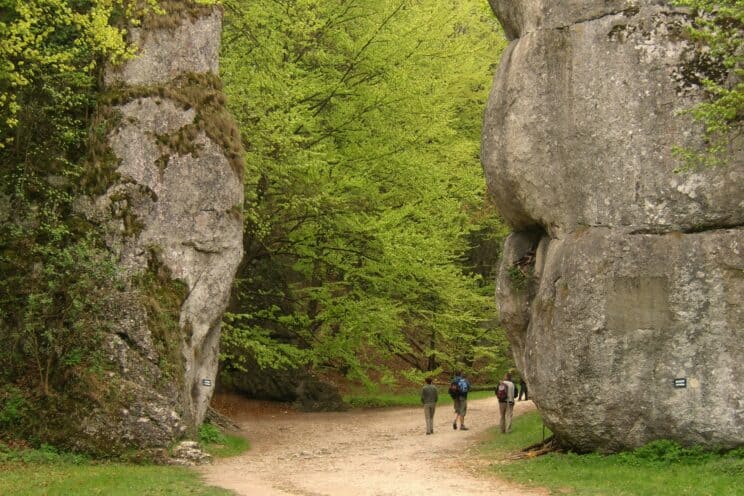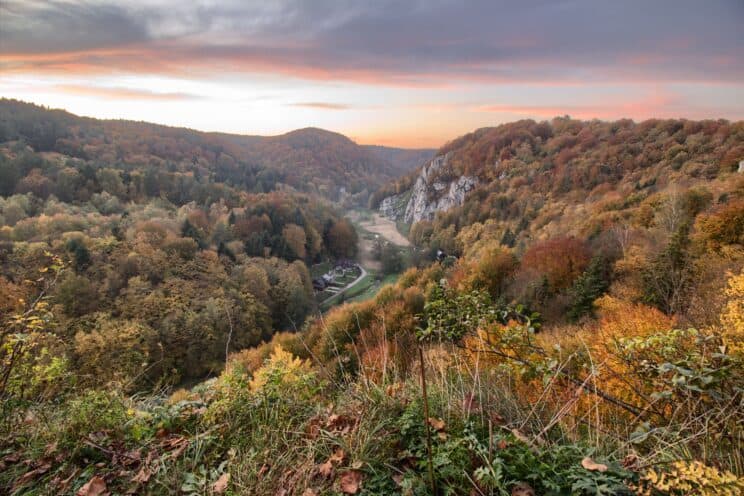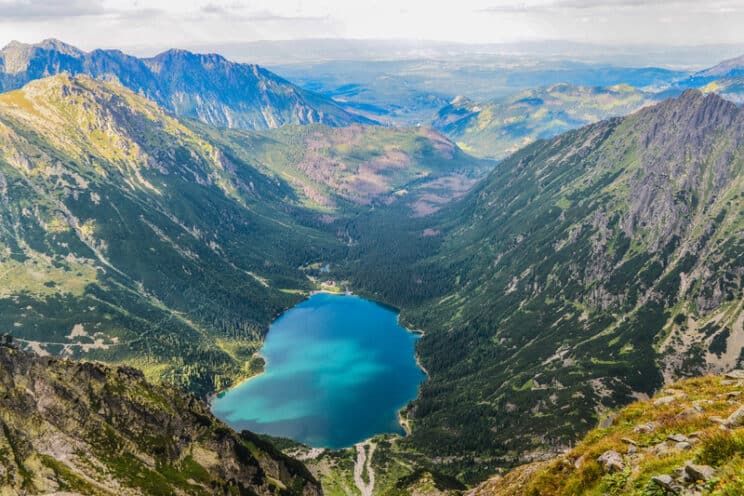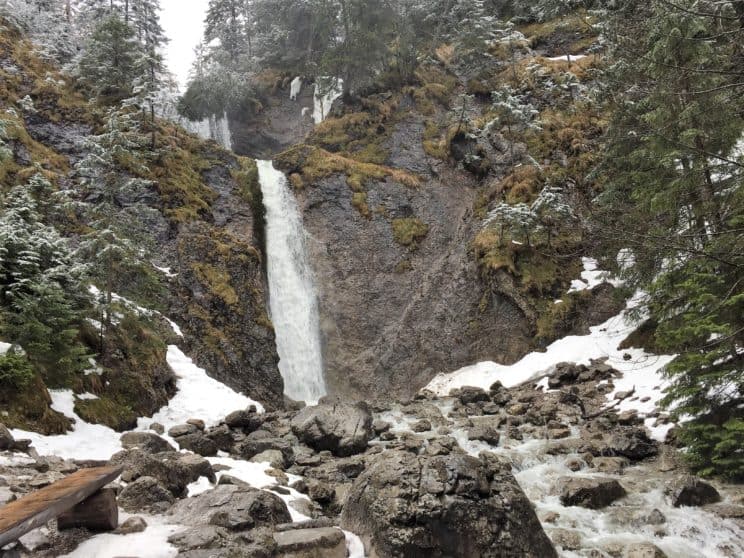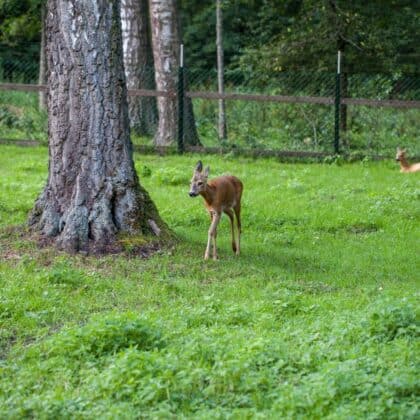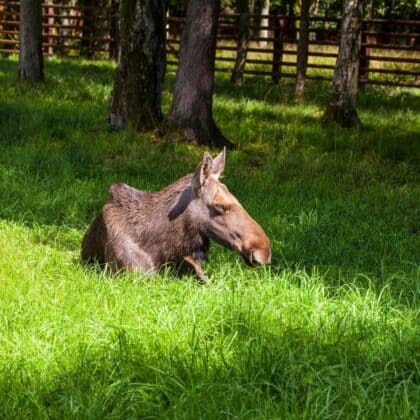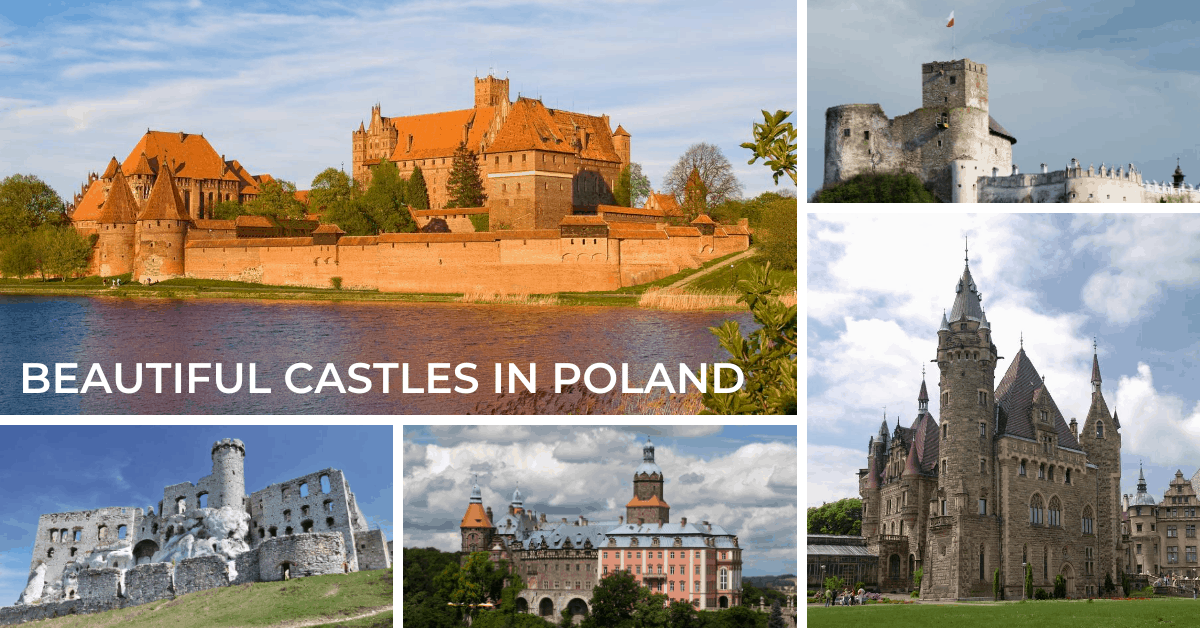Out of 516 national parks in Europe, 23 national parks are located in Poland
National parks in Poland contain many of the most treasured landscapes, from the majestic mountain ranges to the beaches, ancient forests, lush green valleys. It’s tough to choose which natural wonders in Poland you should visit first. If you’re a lover of the outdoors and fancy yourself as a bit of a discoverer, these selected destinations in Poland should be on your travel bucket list.

- Jump to the Słowiński National Park located along the Baltic coast – mobile sand dunes, lakes, wetlands, and forests by the sea
- Jump to the Kampinos Forest near Warsaw – 350 km of hiking trails
- Jump to the Ojcowski National Park near Kraków – caves, two castles, hiking trails
- Jump to the Tatra National Park – 275 km of mountain hiking trails for beginners and for advanced climbers
- Jump to the Białowieża National Park in eastern Poland – bison, ancient forests, hiking and biking trails
- Jump to the Pieniny National Park – beautiful mountains and unforgettable rafting
- Jump to the Karkonosze National Park – mountains worth visiting at any time of the year
- Jump to the Stołowe Mountains National Park – considered one of the most captivating mountains in Poland
- Jump to the Świętokrzyski National Park – easy walking routes in one of the oldest mountain range in Europe
The Słowiński National Park located along the Baltic coast – mobile sand dunes, lakes, wetlands, and forests by the sea
Słowiński National Park (Słowiński Park Narodowy) is located in the north of Poland (the Pomeranian Province), in the central part of the Polish sea coast, 100 km from the city of Gdańsk. The most popular tourist destinations within the Park include Rowy, Łeba, Smołdzino.
The name of the Park comes from the group of Kashubian tribe (Słowińcy), a small ethnic group that once lived in this area. Their history as well as the history of the region can be found in the open-air museum located in the village of Kluki (the museum’s website in English).
The biggest attraction of the Park, unique in Europe, is the desert dune landscape. The mobile dunes are huge – they can reach a height of over 30 meters. The dunes, constantly moving, change the landscape, covering trees and paths with sand.
The lakes of the Park are also unique – they are mixed with fresh and salty seawater.
Part of the European cycling route “EuroVelo 10” is located in the Słowiński National Park (the bike trail that circles the Baltic Sea). Here you can see the Polish part of this cycling route on the map. Hiking trails in the Park are made available for cycling. In many places within the Park, there are bike rentals.
The Słowiński National Park is one of 11 UNESCO biosphere reserves in Poland.
- Słowiński National Park on Google map.
- Website in Polish, website in English, website in German, Facebook page.
- A PDF map of tourist attractions and hiking trails in the Park.
- Here you will find info in English about the most popular hiking trails in the Park.
- Fees are charged for admission to the Słowiński National Park and the use of car parks from May 1 to September 30 (regular ticket 7 PLN, reduced ticket 3,50 PLN, children up to 7 free entrance).
The Kampinos Forest near Warsaw – 350 km of hiking trails
The Kampinos Forest (Puszcza Kampinoska) is located right next to the northwestern border of Warsaw. Most of its area is protected within the Kampinoski National Park (Kampinoski Park Narodowy). This is very unique on a global scale – the national park borders on the capital of the state! The inhabitants of Warsaw are lucky to be so close to the national park.
Visitors can enjoy here 350 km of hiking trails, a 200 km long bicycle trail, horse trails, 10 educational paths, 19 parking lots, and 12 rest areas located on the edge of the park.
The symbol of the Kampinoski National Park is the elk. Other animals include roe deer, beavers, foxes, lynxes, wolves, hundreds of species of birds. The richness of the nature of the forest is very diverse – you will find here dunes, ancient trees, peat bogs or marshes.
The Kampinoski Forest is one of 11 UNESCO biosphere reserves in Poland.
Read more in our new post on the website, including a detailed description of selected hiking trails (e.g. starting point, where to leave a car) and our tips: National parks in Poland: Kampinos Forest near Warsaw.
- Kampinos on Google map.
- Website in Polish, Facebook page.
- Here you will find a map of hiking trails in the Park.
- Admission to the Park is free.
The Ojcowski National Park near Kraków – caves, two castles, hiking trails
The Ojcowski National Park (Ojcowski Park Narodowy) is located in southern Poland, 20 km north of the city of Kraków. It is the smallest of the Polish national parks and very charming. The Park covers the picturesque valley of the Prądnik River.
There are many caves and grottos in the area of the Park, two of which are open to tourists from April to October: Łokietek Grotto (Grota Łokietka) and Ciemna Cave (Jaskinia Ciemna). These caves are closed for the winter season due to the protection of bats. The Łokietek Grotto is the largest cave in the Park. Its length is 320 m. It consists of several corridors and 4 rooms. Visiting the cave is facilitated by wooden stairs and electric lighting. At the Ciemna Cave, you can see, among others, the reconstruction of the camp of the Neanderthals who once lived in the cave.
The symbol of the Park is the bat that lives in the caves – there are 17 species of bats in the Park.
In addition to walking and natural attractions in the Park, you can visit the ruins of a medieval castle in the village of Ojców (more in English about visiting the castle) or the renaissance castle – Zamek Pieskowa Skała (the castle’s website in Polish).
- Ojcowski National Park on Google map.
- Website in Polish, Facebook page.
- Admission to the Park is free.
The Tatra National Park – 275 km of mountain hiking trails for beginners and for advanced climbers
The Tatra Mountains (Tatry in Polish) – the highest mountains in Poland, located in the south of Poland and protected as national parkland – are part of the Carpathian Mountains. The town of Zakopane is in the heart of the Polish Tatra Mountains, serving as a starting point for hiking trails for amateurs as well as experienced hikers.
The highest peak in Polish Tatras (Rysy) is 2,499 m but the mountains are rich in trails suitable for families with children (including toddlers), seniors and all those who love nature.
The Polish Tatras are covered by the Tatra National Park (Tatrzański Park Narodowy), offering 275 km of marked hiking trails of varying difficulty: from very easy to extremely demanding and equipped with devices like chains, buckles, and ladders. You will find in the Tatra Mountains many well-marked trails of easy to moderate difficulty – perfect for beginners, usually half-day to one-day tours. Hiking trails in the Tatras are marked with five colors: black, red, green, blue, yellow. The colors do not indicate the difficulty of the trail.
- Tatra National Park on Google map.
- Website in Polish, Facebook page, Instagram.
- Our post with tips on visiting the Tatra National Park: Hiking in Poland – the Tatra Mountains and Zakopane trails.
- Our tips for hiking with children in the Polish Tatra Mountains.
- Hiking in the Polish Tatra Mountains: the Morskie Oko Lake (Eye of the Sea) trail.
- Hiking in the Polish Tatra Mountains: the Strążyska Valley (Dolina Strążyska).
- Hiking in the Polish Tatra Mountains: the Kościeliska Valley (Dolina Kościeliska).
- To enter the trail, you must have an admission ticket to the Tatra National Park. The ticket is valid for the whole day and gives access to all the trails. A regular ticket costs 7 PLN, reduced 3,50 PLN (students, seniors, people with disabilities), children up to 7 have free entrance.
The Białowieża National Park in eastern Poland – bison, ancient forests, hiking and biking trails
Białowieża National Park (17% of the area of the Polish part of the Białowieża Primeval Forest) is a protected area famous for its ancient forest that survived in its natural state to this day and large bison population, as well as hiking and biking trails. It is a perfect place for all those who love nature. The area gives a unique opportunity to observe nature, exceptional biodiversity, rare species of fauna and flora. The Białowieża Forest is known worldwide for the European bison – the largest land mammal in Europe.
The Białowieża Forest is situated on the border of Poland and Belarus. Its Polish part covers about 40%. The village of Białowieża is considered the geographical center of the forest.
The Białowieża Primeval Forest (Puszcza Białowieska) was created without human intervention and is the only natural place in Poland entered on the UNESCO World Heritage List.
Read more in our post on the website, including attractions in the Białowieża area and our tips: Attractions in eastern Poland: Białowieża Forest.
- Białowieża National Park on Google map.
- Website in Polish, Facebook page.
- Admission to the Park is free.
The Pieniny National Park – beautiful mountains and unforgettable rafting
The Pieniny National Park (Pieniński Park Narodowy) and the Pieniny Mountains and are one of the most popular tourist regions in Poland (in terms of the number of tourists, they are second only to the Tatra Mountains). The highest peak is the Wysoka mountain (1050 m above sea level) and the most popular peaks include Trzy Korony and Sokolica.
One of the main attractions of the Pieniny Mountains is the Dunajec River. The Dunajec River Gorge (Przełom Dunajca) is considered one of the most beautiful places not only in Poland but in the world. The river flows in a deep, carved rock gorge. On a length of 9 km, it makes seven sharp loops (three of them exceed an angle of 130°, the height of the steep limestone walls is 300-500 meters above the waterline). All this creates perfect conditions for rafting – with a wooden raft run by Pieniny Gorals or a rented inflatable raft or canoe. Rafting is available from April 1 to October 31. Here you will find information in English about rafting (online tickets, starting point, etc.).
Another attraction of the region are two castles. Czorsztyn Castle (magnificent ruins of the castle from the fourteenth century) and Niedzica Castle (Zamek Dunajec) are both located on the shores Czorsztyńskie Lake (Jezioro Czorsztyńskie). The lake is beautifully located between the Pieniny Mountains and Gorce Mountains; it’s an artificial water reservoir on the Dunajec River, created by building a water dam in Niedzica town. Both castles are open to tourists, and small cruise marinas have been built next to them so you can enjoy the views from lake cruises.
- Pieniński National Park on Google map.
- Website in Polish, website in English, website in German, Facebook page.
- Information in English about the hiking trails and a map of the Park.
- Admission to the Park is free.
The Karkonosze National Park – mountains worth visiting at any time of the year
A characteristic element of the Karkonosze National Park (Karkonoski Park Narodowy) and the Karkonosze mountains landscape and are picturesque rock formations, called little rocks – they have various, often fantastic shapes and are associated with legends.
There are waterfalls on many streams, the most famous of which are: Kamieńczyka Waterfall and Szklarki Waterfall.
The highest peak of the Sudetes (Śnieżka) is located in the Karkonosze Mountains. The main tourist destinations of this region are the towns of Jelenia Góra, Szklarska Poręba, Karpacz (Karpacz’s website in English covering attractions for families).
Some scenes from the movie “The Chronicles of Narnia: Prince Caspian” were shot in Poland, in the Karkonosze Mountains (in the Kamieńczyka Gorge).
- Karkonosze National Park on Google map.
- Website in Polish, website in English, Facebook page, Instagram.
- A map of the Park.
- Information in English about the hiking trails.
- To enter the trail, you must have an admission ticket. A regular ticket costs 8 PLN, reduced 4 PLN (students, seniors, people with disabilities), children up to 7 have free entrance.
The Stołowe Mountains National Park – considered one of the most captivating mountains in Poland
The Stołowe Mountains National Park (Park Narodowy Gór Stołowych) and the Stołowe Mountains (the Table Mountains) are worth visiting due to their unique topography. The mountain massif consists of plates that are arranged horizontally – mountains of this type in Europe are very rare. According to many, they are the most interesting mountains in Poland. The highest peak is Szczeliniec Wielki mountain (919 m above sea level), other attractions include rock labyrinths (the most famous one – Błędne Skały).
The two most popular hiking trails include the trail to the top of Szczeliniec Wielki peak (called a “rocky city”) and a rocky maze of Błędne Skały. Here you will find maps of the Parks and two trails.
- Stołowe Mountains National Park on Google map.
- Website in Polish, website in English, website in German, website in Czech, Facebook page.
- Information in English and a map of biking routs in the Park.
- Fees are charged for admission to the Park. Szczeliniec Wielki peak trail: regular ticket 12 PLN, reduced ticket 6 PLN. Błędne Skały trail: regular ticket 12 PLN, reduced ticket 6 PLN; parking fee 30 PLN. Children up to 7 free entrance.
The Świętokrzyski National Park – easy walking routes in one of the oldest mountain range in Europe
The Świętokrzyskie Mountains – the lowest mountains in Poland and one of the oldest mountain range in Europe – are located near the city of Kielce, the capital of the Świętokrzyskie Province (2 hours drive from Kraków and from Warsaw; 3 from Łódź; 2,5 from Katowice; 4,5 from Poznań and from Wrocław; 5+ from Gdańsk).
Their highest peak is Mount Łysica (614 m above sea level). The name of the mountains comes from the relics of the Holy Cross (Święty Krzyż -> Świętkorzyskie) kept in the monastery on Mount Łysa Góra.
- Świętokrzyski National Park on Google map.
- Website in Polish, website in English, Facebook page.
- You can find the list of tourist attractions on the website of the Świętokrzyskie Voivodeship (in Polish), description of hiking and cycling routes on The Świętokrzyski National Park website (in Polish), on the Park’s website you will also find information in English about the Park and the mountains.
- Fees are charged for admission to the Park to selected trails. A regular ticket costs 8 PLN, reduced 4 PLN (students, seniors, people with disabilities), children up to 7 have free entrance.
Subscribe to our monthly newsletters in English to explore Poland and to learn about Poland! Once a month you will receive a Newsletter: ‘Explore Poland with Kids‘. You will find there family-friendly destinations in Poland – beautiful places in Poland worth visiting with children – from city break destinations to hiking in the mountains (lots of practical tips!); things you can’t miss in Poland in a given month; dates to remember, holidays, observances in Poland in a given month so you can mark your calendars accordingly.

